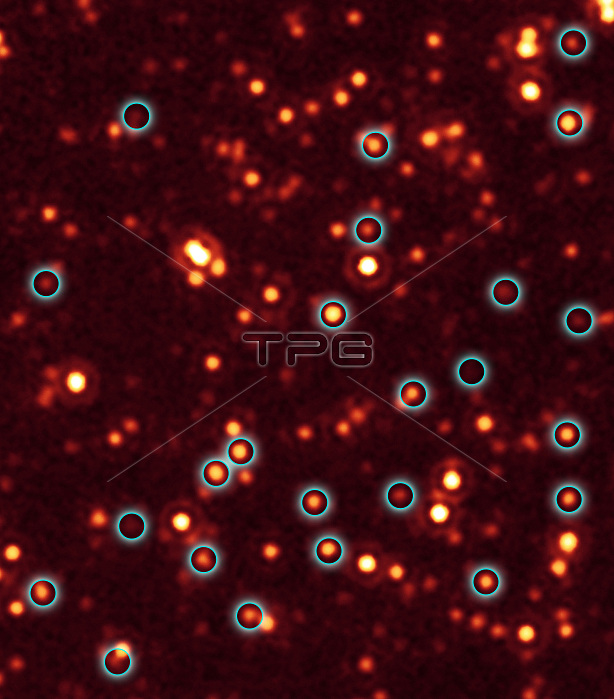
A long-lost population of active supermassive black holes, or quasars.This image, taken with Spitzer's infrared vision, shows a fraction of these black holes, which are located deep in the bellies of distant, massive galaxies. This picture shows a portion of the Goods field called Goods-South. When astronomers saw the Spitzer data, they were surprised to find that hundreds of the galaxies between 9 and 11 billion light-years away were shining with an unexpected excess of infrared light. They then followed up with X-ray data from Chandra of the same field, and applied a technique called stacking, which adds up the faint light of multiple galaxies. The results revealed that the infrared-bright galaxies are hiding many black holes that had been theorized about before but never seen. This excess infrared light is being produced by the growing black holes. The other smudges in this picture are distant galaxies, most of which are closer to us than the circled galaxies, causing them to appear brighter. This image was taken by Spitzer's multiband imaging photometer at a wavelength of 24 microns. It shows the faintest distant objects ever observed with Spitzer at this wavelength.
| px | px | dpi | = | cm | x | cm | = | MB |
Details
Creative#:
TOP22310148
Source:
達志影像
Authorization Type:
RM
Release Information:
須由TPG 完整授權
Model Release:
N/A
Property Release:
No
Right to Privacy:
No
Same folder images:

 Loading
Loading